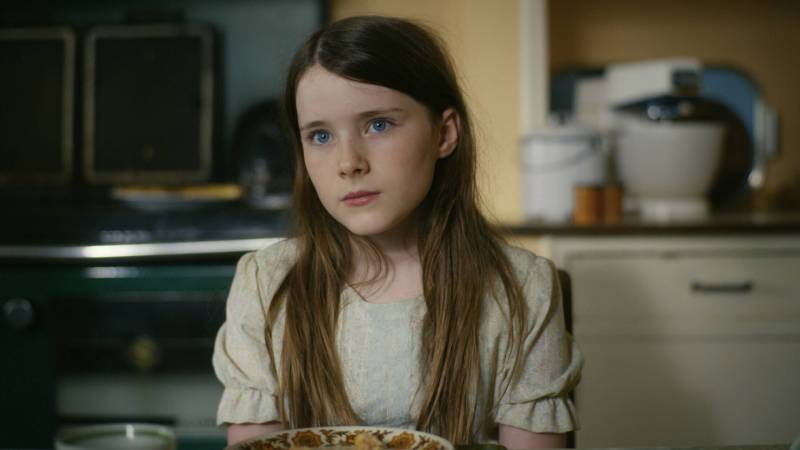One of the most refreshing things about The Quiet Girl is that it doesn’t treat silence as some problem that needs to be solved. When someone criticizes Caít early on for being so quiet, Seán gently defends her, saying she “says as much as she has to say.” And yet we see how Caít gradually flourishes under her guardians’ loving attention. Clinch’s luminous performance shows us what it’s like for a child to experience real, carefree happiness for the first time, whether it’s Eibhlín offering Caít a drink of crystalline water from the well near their house or Seán pressing a little pocket money into the girl’s hands.
Seán and Eibhlín are clearly delighted by this temporary addition to their household, in part because it chases away some of the sorrow they’ve experienced in their own lives. The source of that sorrow isn’t made clear right away, though you’ll likely figure it out if you’re paying close attention. When the truth does come out, it’s treated with a gentle matter-of-factness that — much like the unfussy natural beauty of Kate McCullough’s cinematography — deepens our sense of immersion in these characters’ lives.
The Quiet Girl was written and directed by Colm Bairéad, an Irish filmmaker whose background is in documentaries. That may account in part for how exquisitely observed his first narrative feature is. Bairéad trusts the power of understatement, and that’s a rare thing, given how prone so many films are to noise and over-explanation. Not many movies would focus on a character as unassuming as Caít, but there’s nothing small or insignificant about her story. Sometimes, it’s the quietest movies that turn out to have the most to say.
Copyright 2023 Fresh Air. To see more, visit Fresh Air.9(MDAxOTAwOTE4MDEyMTkxMDAzNjczZDljZA004))



9(MDAxOTAwOTE4MDEyMTkxMDAzNjczZDljZA004))

